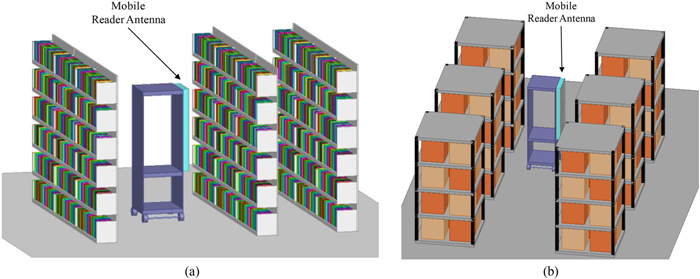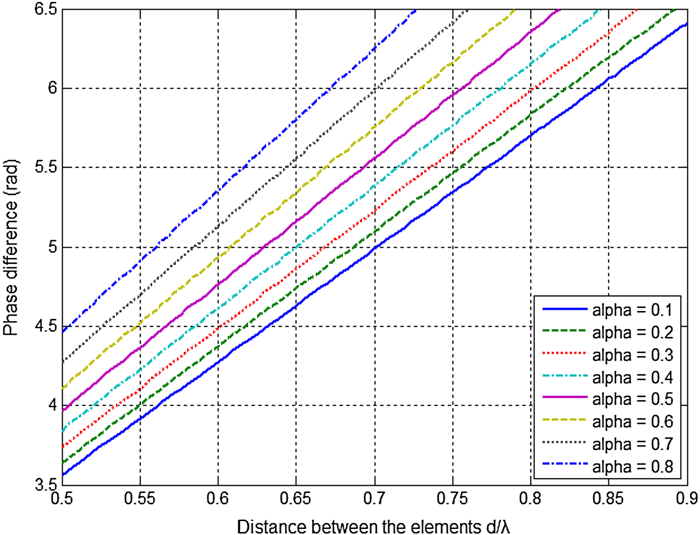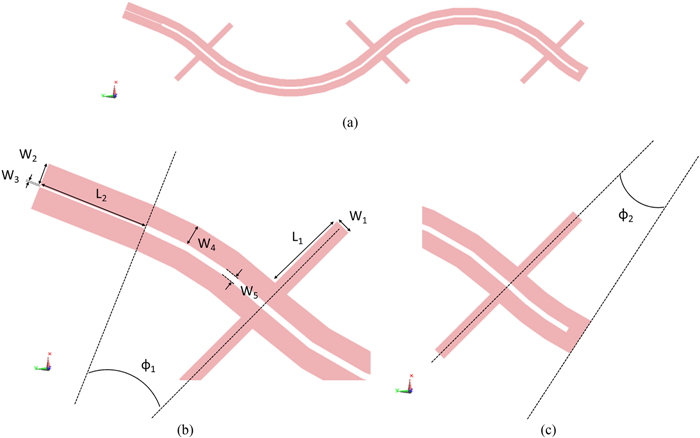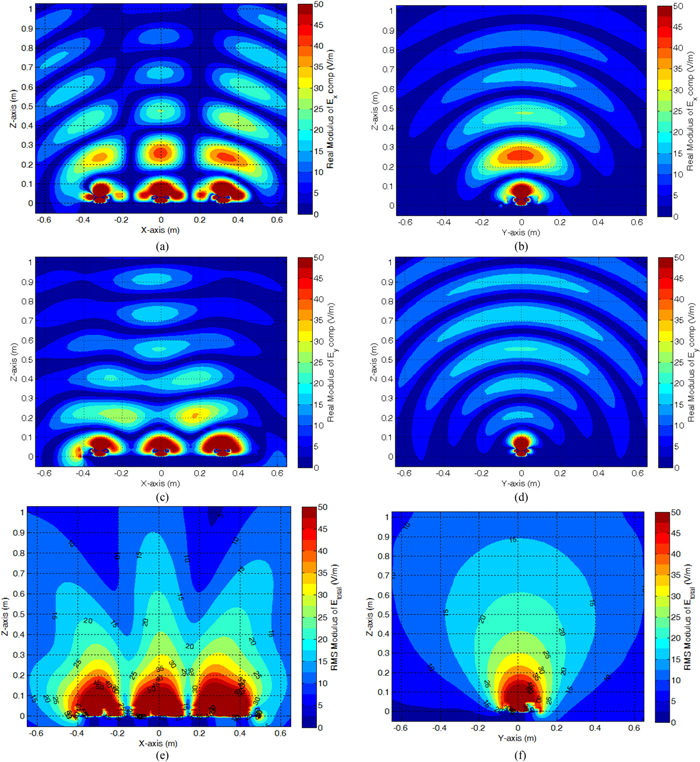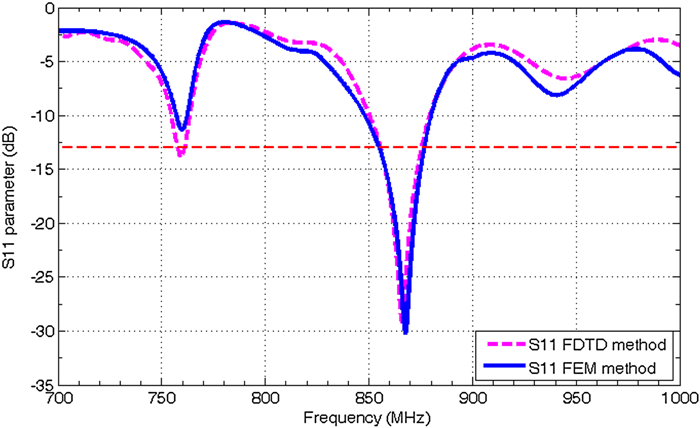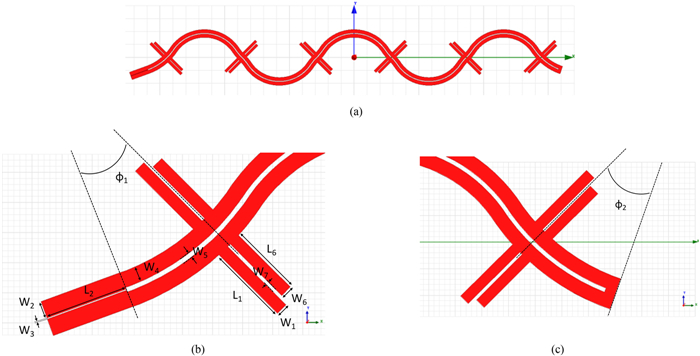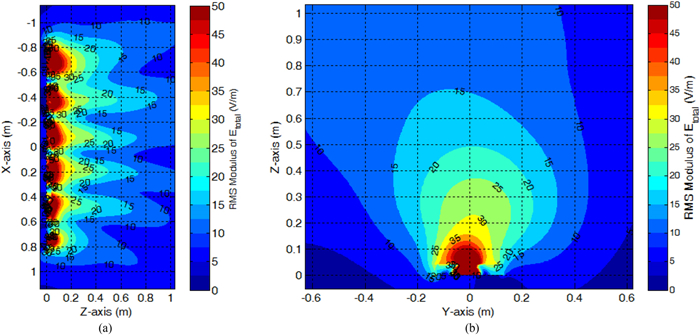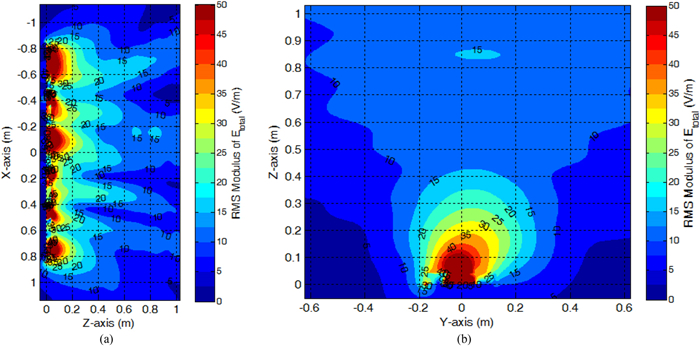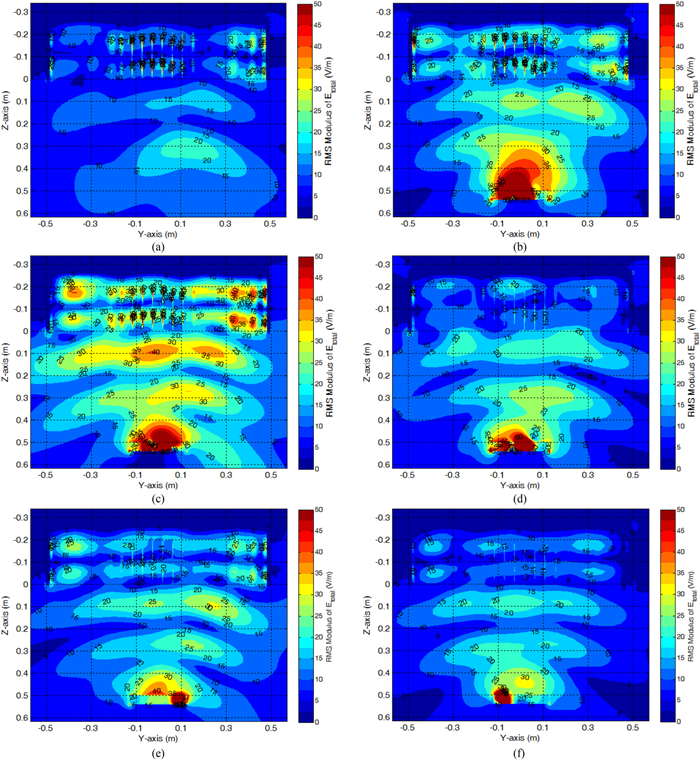Design procedure of UHF RFID reader antennas based on ETSI and FCC standards
-
1.
Department of Electrical & Computer Engineering, University of Nicosia Research Foundation, UNRF, 46 Makedonitissas Ave., 1700 Nicosia, Cyprus
-
2.
Department of Electrical & Computer Engineering Radio-Communications Laboratory, Department of Physics, Aristotle University of Thessaloniki, AUTh Campus, 54124 Thessaloniki, Greece. Phone: +30 2310 998 069
-
3.
Department of Electrical & Computer Engineering, Technical University of Crete, TUC Campus, Kounoupidiana, 73100 Chania, Greece
More Information
-
Author Bio:
 Anastasis C. Polycarpou
Anastasis C. Polycarpou graduated from Arizona State University in 1992 earning a BSEE degree in Electrical Engineering (EE) with Summa Cum Laude. He continued his graduate studies at the same University where he received an M.S. degree in 1994 and a Ph.D. degree in 1998. He is now a Professor and Department Head at the University of Nicosia in Cyprus. He has an extensive experience in funded research projects related to antenna analysis and design, microwave circuits and high-frequency electronic packaging, finite element/boundary integral methods in Electromagnetics, mode-matching and analytical methods, modeling of liquid crystals and non-linear optics, and radio frequency identification (RFID) systems. He is the author of a book and two chapters in books as well as a co-author of more than 80 papers in refereed journals and conference proceedings. Professor Polycarpou is a Senior Member of the IEEE and a member of IEEE Society on Antennas and Propagation and IEEE Society on Microwave Theory and Techniques. He is currently an Associate Editor of the IET Microwaves, Antennas & Propagation. He was a national delegate of COST IC0603 (ASSIST) and now a national delegate of COST IC1102 (VISTA). He is also a member of EurAAP.
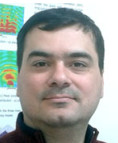 Achilles Boursianis
Achilles Boursianis was born in Larissa, Greece. He received his B.Sc. degree in Physics and M.Sc. degree in Electronic Physics – Radioelectrology (Electronic Telecommunications Technology), both from Aristotle University of Thessaloniki (AUTh), Greece. He is currently working toward a Ph.D. degree at the same University. He is also a research assistant with the Radio-Communications Laboratory, Department of Physics, AUTh. His research interests include analysis and design of optical networks, broadband monitoring systems, wireless sensor networks, and RFID antenna design. He is a member of the Hellenic Society of Physicists and the Electronic Physics Society.
 Theodoros Samaras
Theodoros Samaras has received his first degree and Ph.D. degree in Physics from Aristotle University of Thessaloniki, Greece and the M.Sc. degree in Medical Physics (with distinction) from the University of Surrey, Surrey, UK. He has worked in the Swiss Federal of Technology (ETH), and the Erasmus Medical Centre of Rotterdam, where he has conducted research on Computational Dosimetry for Electromagnetic Radiation. In December 1999, he returned to Aristotle University of Thessaloniki, where he is currently an Associate Professor. His research focuses on computer modeling for applications in biomedical technology and telecommunications. He was the recipient of a Marie-Curie Fellowship from the European Commission and is the author of several papers in peer-reviewed journals. He is currently member of the European Commission's Scientific Committee on Emerging and Newly Identified Health Risks (SCENIHR).
 Aggelos Bletsas
Aggelos Bletsas is currently an Associate Professor at School of Electronic and Computer Engineering, Technical University of Crete. He received a diploma degree in Electrical and Computer Engineering from Aristotle University of Thessaloniki, Greece in 1998, and the S.M. and Ph.D. degrees in Media Arts & Sciences from MIT in 2001 and 2005, respectively. He worked at Mitsubishi Electric Research Laboratories, Cambridge, MA, and at Radiocommunications Laboratory, Department of Physics, Aristotle University of Thessaloniki. His research interests include detection and estimation, backscatter communications and RFID, energy harvesting, radio hardware/software implementations for wireless transceivers, and low cost sensor networks. Dr. Bletsas was the co-recipient of IEEE Communications Society 2008 Marconi Prize Paper Award in Wireless Communications, best paper distinction in ISWCS 2009, second best student paper award in IEEE RFID-TA 2011, and the best paper distinction in IEEE Sensors 2013. At the end of 2013, he was awarded the Technical University of Crete 2013 Research Excellence Award.
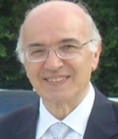 John N. Sahalos
John N. Sahalos is a Professor at the ECE Department of the University of Nicosia, Cyprus and a Professor Emeritus at the Aristotle University of Thessaloniki (AUTH), Greece. He was a visiting faculty member at the Ohio State University, the University of Colorado and the Technical University of Madrid. Author of four books and more than 450 articles published in the scientific literature. His research interests are in the areas of antennas, radio-communications, EMC/EMI, RFID, microwaves, and biomedical engineering. He is a member of the Board of Directors in a Multinational Telecommunications Company, executive manager of the UNIC Research Foundation (UNRF) and in the consulting committee of the GRNET. Dr. Sahalos is an IEEE Life Fellow, an Honorary Fellow of the Electronic Physics Society, a member of Physical Society and of the Technical Chamber of Greece. With his colleagues he designed innovative products such as the EIT, the MLS, the ORAMA simulator, and the SMS-K monitoring system
-
Corresponding author:
A. Boursianis Email: bachi@physics.auth.gr
-
Abstract
This paper presents the design procedure of two ultra-high-frequency radio frequency identification reader antennas used in searching tagged items. They consist of microstrip arrays with alternating orthogonal dipoles, which are fed in series by a pair of microstrip lines. The dipoles are designed properly to provide the required bandwidth. The inter-element distance is adjusted to the center frequency, where the elements provide in-phase excitation and create two orthogonal electric-field components that give beams with direction diversity. Simulated results show that the return loss bandwidth (RL > 13 dB) of the first antenna design covers the required frequency band of ETSI (865–868 MHz) standard. In addition, simulated and measured results of the second antenna design indicate that the return loss bandwidth covers both the frequency bands of european telecommunications standards institute (ETSI) and federal communications commission (FCC) (865–928 MHz) standards. Regarding the coverage volume in the vicinity of the antenna, it was deduced that both antennas can read tagged items in a semi-cylindrical volume that extends to a radius of more than 50 cm. Finally, a case study of reading tagged books in front of a library cabinet with six shelves has been presented.
-
About this article
Cite this article
Polycarpou AC, Uoursianis A, Samaras T, Bletsas A, Sahalos AJN. 2015. Design procedure of UHF RFID reader antennas based on ETSI and FCC standards. Wireless Power Transfer 2(1): 32-43 doi: 10.1017/wpt.2015.1
|
Polycarpou AC, Uoursianis A, Samaras T, Bletsas A, Sahalos AJN. 2015. Design procedure of UHF RFID reader antennas based on ETSI and FCC standards. Wireless Power Transfer 2(1): 32-43 doi: 10.1017/wpt.2015.1
|









 Anastasis C. Polycarpou graduated from Arizona State University in 1992 earning a BSEE degree in Electrical Engineering (EE) with Summa Cum Laude. He continued his graduate studies at the same University where he received an M.S. degree in 1994 and a Ph.D. degree in 1998. He is now a Professor and Department Head at the University of Nicosia in Cyprus. He has an extensive experience in funded research projects related to antenna analysis and design, microwave circuits and high-frequency electronic packaging, finite element/boundary integral methods in Electromagnetics, mode-matching and analytical methods, modeling of liquid crystals and non-linear optics, and radio frequency identification (RFID) systems. He is the author of a book and two chapters in books as well as a co-author of more than 80 papers in refereed journals and conference proceedings. Professor Polycarpou is a Senior Member of the IEEE and a member of IEEE Society on Antennas and Propagation and IEEE Society on Microwave Theory and Techniques. He is currently an Associate Editor of the IET Microwaves, Antennas & Propagation. He was a national delegate of COST IC0603 (ASSIST) and now a national delegate of COST IC1102 (VISTA). He is also a member of EurAAP.
Anastasis C. Polycarpou graduated from Arizona State University in 1992 earning a BSEE degree in Electrical Engineering (EE) with Summa Cum Laude. He continued his graduate studies at the same University where he received an M.S. degree in 1994 and a Ph.D. degree in 1998. He is now a Professor and Department Head at the University of Nicosia in Cyprus. He has an extensive experience in funded research projects related to antenna analysis and design, microwave circuits and high-frequency electronic packaging, finite element/boundary integral methods in Electromagnetics, mode-matching and analytical methods, modeling of liquid crystals and non-linear optics, and radio frequency identification (RFID) systems. He is the author of a book and two chapters in books as well as a co-author of more than 80 papers in refereed journals and conference proceedings. Professor Polycarpou is a Senior Member of the IEEE and a member of IEEE Society on Antennas and Propagation and IEEE Society on Microwave Theory and Techniques. He is currently an Associate Editor of the IET Microwaves, Antennas & Propagation. He was a national delegate of COST IC0603 (ASSIST) and now a national delegate of COST IC1102 (VISTA). He is also a member of EurAAP.  Achilles Boursianis was born in Larissa, Greece. He received his B.Sc. degree in Physics and M.Sc. degree in Electronic Physics – Radioelectrology (Electronic Telecommunications Technology), both from Aristotle University of Thessaloniki (AUTh), Greece. He is currently working toward a Ph.D. degree at the same University. He is also a research assistant with the Radio-Communications Laboratory, Department of Physics, AUTh. His research interests include analysis and design of optical networks, broadband monitoring systems, wireless sensor networks, and RFID antenna design. He is a member of the Hellenic Society of Physicists and the Electronic Physics Society.
Achilles Boursianis was born in Larissa, Greece. He received his B.Sc. degree in Physics and M.Sc. degree in Electronic Physics – Radioelectrology (Electronic Telecommunications Technology), both from Aristotle University of Thessaloniki (AUTh), Greece. He is currently working toward a Ph.D. degree at the same University. He is also a research assistant with the Radio-Communications Laboratory, Department of Physics, AUTh. His research interests include analysis and design of optical networks, broadband monitoring systems, wireless sensor networks, and RFID antenna design. He is a member of the Hellenic Society of Physicists and the Electronic Physics Society.  Theodoros Samaras has received his first degree and Ph.D. degree in Physics from Aristotle University of Thessaloniki, Greece and the M.Sc. degree in Medical Physics (with distinction) from the University of Surrey, Surrey, UK. He has worked in the Swiss Federal of Technology (ETH), and the Erasmus Medical Centre of Rotterdam, where he has conducted research on Computational Dosimetry for Electromagnetic Radiation. In December 1999, he returned to Aristotle University of Thessaloniki, where he is currently an Associate Professor. His research focuses on computer modeling for applications in biomedical technology and telecommunications. He was the recipient of a Marie-Curie Fellowship from the European Commission and is the author of several papers in peer-reviewed journals. He is currently member of the European Commission's Scientific Committee on Emerging and Newly Identified Health Risks (SCENIHR).
Theodoros Samaras has received his first degree and Ph.D. degree in Physics from Aristotle University of Thessaloniki, Greece and the M.Sc. degree in Medical Physics (with distinction) from the University of Surrey, Surrey, UK. He has worked in the Swiss Federal of Technology (ETH), and the Erasmus Medical Centre of Rotterdam, where he has conducted research on Computational Dosimetry for Electromagnetic Radiation. In December 1999, he returned to Aristotle University of Thessaloniki, where he is currently an Associate Professor. His research focuses on computer modeling for applications in biomedical technology and telecommunications. He was the recipient of a Marie-Curie Fellowship from the European Commission and is the author of several papers in peer-reviewed journals. He is currently member of the European Commission's Scientific Committee on Emerging and Newly Identified Health Risks (SCENIHR).  Aggelos Bletsas is currently an Associate Professor at School of Electronic and Computer Engineering, Technical University of Crete. He received a diploma degree in Electrical and Computer Engineering from Aristotle University of Thessaloniki, Greece in 1998, and the S.M. and Ph.D. degrees in Media Arts & Sciences from MIT in 2001 and 2005, respectively. He worked at Mitsubishi Electric Research Laboratories, Cambridge, MA, and at Radiocommunications Laboratory, Department of Physics, Aristotle University of Thessaloniki. His research interests include detection and estimation, backscatter communications and RFID, energy harvesting, radio hardware/software implementations for wireless transceivers, and low cost sensor networks. Dr. Bletsas was the co-recipient of IEEE Communications Society 2008 Marconi Prize Paper Award in Wireless Communications, best paper distinction in ISWCS 2009, second best student paper award in IEEE RFID-TA 2011, and the best paper distinction in IEEE Sensors 2013. At the end of 2013, he was awarded the Technical University of Crete 2013 Research Excellence Award.
Aggelos Bletsas is currently an Associate Professor at School of Electronic and Computer Engineering, Technical University of Crete. He received a diploma degree in Electrical and Computer Engineering from Aristotle University of Thessaloniki, Greece in 1998, and the S.M. and Ph.D. degrees in Media Arts & Sciences from MIT in 2001 and 2005, respectively. He worked at Mitsubishi Electric Research Laboratories, Cambridge, MA, and at Radiocommunications Laboratory, Department of Physics, Aristotle University of Thessaloniki. His research interests include detection and estimation, backscatter communications and RFID, energy harvesting, radio hardware/software implementations for wireless transceivers, and low cost sensor networks. Dr. Bletsas was the co-recipient of IEEE Communications Society 2008 Marconi Prize Paper Award in Wireless Communications, best paper distinction in ISWCS 2009, second best student paper award in IEEE RFID-TA 2011, and the best paper distinction in IEEE Sensors 2013. At the end of 2013, he was awarded the Technical University of Crete 2013 Research Excellence Award.  John N. Sahalos is a Professor at the ECE Department of the University of Nicosia, Cyprus and a Professor Emeritus at the Aristotle University of Thessaloniki (AUTH), Greece. He was a visiting faculty member at the Ohio State University, the University of Colorado and the Technical University of Madrid. Author of four books and more than 450 articles published in the scientific literature. His research interests are in the areas of antennas, radio-communications, EMC/EMI, RFID, microwaves, and biomedical engineering. He is a member of the Board of Directors in a Multinational Telecommunications Company, executive manager of the UNIC Research Foundation (UNRF) and in the consulting committee of the GRNET. Dr. Sahalos is an IEEE Life Fellow, an Honorary Fellow of the Electronic Physics Society, a member of Physical Society and of the Technical Chamber of Greece. With his colleagues he designed innovative products such as the EIT, the MLS, the ORAMA simulator, and the SMS-K monitoring system
John N. Sahalos is a Professor at the ECE Department of the University of Nicosia, Cyprus and a Professor Emeritus at the Aristotle University of Thessaloniki (AUTH), Greece. He was a visiting faculty member at the Ohio State University, the University of Colorado and the Technical University of Madrid. Author of four books and more than 450 articles published in the scientific literature. His research interests are in the areas of antennas, radio-communications, EMC/EMI, RFID, microwaves, and biomedical engineering. He is a member of the Board of Directors in a Multinational Telecommunications Company, executive manager of the UNIC Research Foundation (UNRF) and in the consulting committee of the GRNET. Dr. Sahalos is an IEEE Life Fellow, an Honorary Fellow of the Electronic Physics Society, a member of Physical Society and of the Technical Chamber of Greece. With his colleagues he designed innovative products such as the EIT, the MLS, the ORAMA simulator, and the SMS-K monitoring system 


